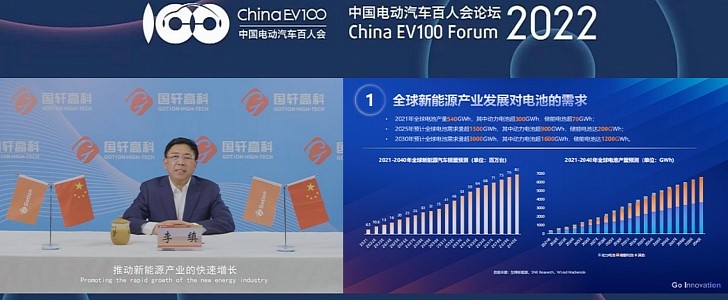LFP cells are cheaper and more robust than ternary batteries. What makes them the ugly ducklings in the automotive world is the low energy density they present. However, that is changing fast, and these cells are getting significant increases in that regard. SVolt and Gotion High-Tech (Guoxuan) are the most recent evidence of that.
SVolt recently started to sell LFP cells with 200 Wh/kg. If you consider that most of these batteries currently for sale reach around 160 Wh/kg, that’s a 25% increase. The company’s website states that these cells are available for A-segment, B-segment, and C-segment vehicles in SVolt’s proprietary L6 format: it is 21.5 mm wide, 574 mm long, and 118 mm tall.
For A-segment cars, the LFP battery achieves 208 Ah. B-segment and C-segment cars get cells that reach 266 Ah. In both cases, the maximum C rate is 1.6. SVolt also offers an LFP solution for fast charging, able to stand 2.2C. The problem is that it is a little less energy-dense, at 195 Wh/kg. Carmakers and customers may find that acceptable to spend less time in chargers.
Both SVolt and Gotion High-Tech believe they can soon reach 230 Wh/kg. While the former said it would start producing its cell by 2023, Gotion stated its LFP battery would be available by the end of 2022. The curious part is that it will not sell them in prismatic format. According to PushEVs, Gotion sells LFP pouch batteries.
That prevents the use of CTP (cell-to-pack), in which cells also perform a structural role, saving weight and increasing energy density. With CTP, the GCTP (gravimetric-cell-to-pack) ratio is around 90%. That means that a battery pack with the 200 Wh/kg cells from SVolt would present 180 Wh/kg.
Gotion uses a similar approach to give its pouch cells the same leverage. Called JTM (Jelly roll-to-module), it delivers a GCTP ratio with pouch cells that is identical to that obtained with CTP: 90% or 207 Wh/kg at the battery pack level.
With more abundant and cheaper materials in its construction and increasing energy density, LFP cells tend to perform a much more critical role in car electrification than people used to believe. That and solid-state batteries promise to take electric cars to a whole new level of competitiveness with combustion-engined vehicles.
For A-segment cars, the LFP battery achieves 208 Ah. B-segment and C-segment cars get cells that reach 266 Ah. In both cases, the maximum C rate is 1.6. SVolt also offers an LFP solution for fast charging, able to stand 2.2C. The problem is that it is a little less energy-dense, at 195 Wh/kg. Carmakers and customers may find that acceptable to spend less time in chargers.
Both SVolt and Gotion High-Tech believe they can soon reach 230 Wh/kg. While the former said it would start producing its cell by 2023, Gotion stated its LFP battery would be available by the end of 2022. The curious part is that it will not sell them in prismatic format. According to PushEVs, Gotion sells LFP pouch batteries.
That prevents the use of CTP (cell-to-pack), in which cells also perform a structural role, saving weight and increasing energy density. With CTP, the GCTP (gravimetric-cell-to-pack) ratio is around 90%. That means that a battery pack with the 200 Wh/kg cells from SVolt would present 180 Wh/kg.
Gotion uses a similar approach to give its pouch cells the same leverage. Called JTM (Jelly roll-to-module), it delivers a GCTP ratio with pouch cells that is identical to that obtained with CTP: 90% or 207 Wh/kg at the battery pack level.
With more abundant and cheaper materials in its construction and increasing energy density, LFP cells tend to perform a much more critical role in car electrification than people used to believe. That and solid-state batteries promise to take electric cars to a whole new level of competitiveness with combustion-engined vehicles.












